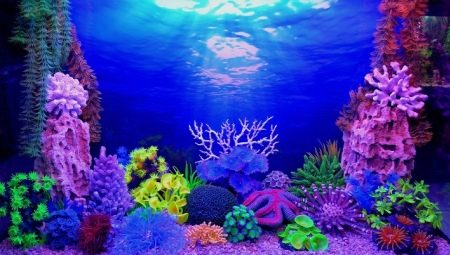The fish owners know how important it is to give the aquarium a bewitching atmosphere. Therefore, among aquarists, special importance is given to the background for the aquarium. What is it, what is its purpose, and what are the main points of the choice, let's understand.
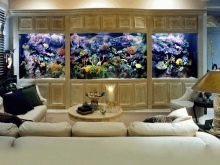
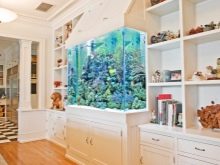
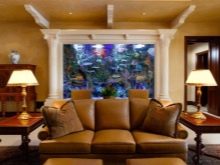
What is it and why is it needed?
The background for the aquarium is an element of arrangement that performs practical and decorative functions. Through it, the back of the aquarium is designed as a complement to traditional decorations (driftwood, rocks, stones, living plants), which are usually laid for the comfort of fish. In addition, the background hides communications (for example, pipes and power cords) located behind the aquarium.
Without a background, the design of a home pond for fish is considered incomplete. In addition to masking the protruding equipment, this element forms a general perception of the organization of the living corner. Moreover, he himself is invisible and can create a spatial perspective. This is a kind of alternative to paint, which until recently had masked the back of the aquarium. In addition, the aquarium background distracts attention from the shortcomings of the interior design. It smoothes out the flaws, sets off the plants, introducing a special atmosphere into the design. With its help, coziness is created for the fish themselves, he is able to make their color expressive, and sometimes even create an imitation of the "interior" with a smooth flow of elements in a single picture.
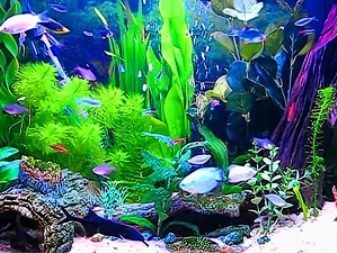
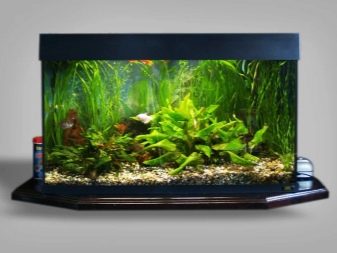
Varieties
The whole variety of options offered to the attention of buyers can be divided into 2 groups: internal and external. Modifications of the external type are most common, because they are cheaper and are characterized by a rich assortment.Each buyer has the opportunity to choose an option taking into account taste preferences, without cutting the budget. Products in this category overgrow with algae.

Analogs of the internal type are considered more natural due to their visual characteristics. However, after installation, they can adversely affect the composition of the internal fluid. These varieties are installed inside the aquarium before it is filled with water.
At the same time, special attention is paid to their fixation in order to prevent small inhabitants from getting between the background and the wall of the aquarium.
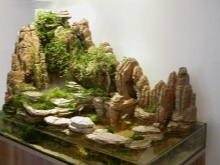

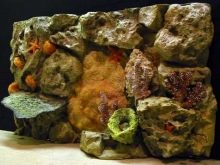
Besides, backgrounds are ready and homemade. In fact, all options can be divided into several types: volumetric models made of plastic, foam, cork and the so-called film. Moreover, the background does not have to be monophonic. On sale there are modifications with the underwater world, imitation of stones on the seabed, a view of resort towns and mountains.
Based on the type of drawing, background for the aquarium can be typical and embossed, 3D. Depending on the type of background canvas and the theme of the picture, you can give it a greater volume effect. This is done through the use of various greens, the creation of various moves for fish, as well as through the use of backlight. In addition, the background is complemented by stones and broken bricks.
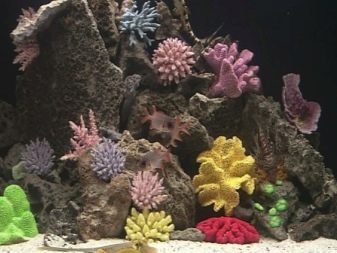
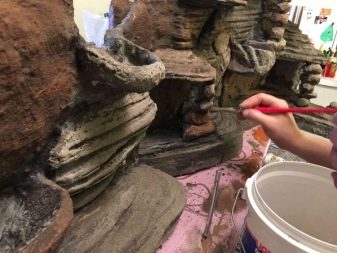
Ready-made background with the necessary landscape is purchased in specialized stores. Polyurethane volumetric models are able to reproduce any texture, down to wood and stone. These relief sheets give the aquarium a special touch. Despite the fact that they cost more than film, they are bought more often. This is explained by the presentability that quality panels carry in the aquarium design. However, cleaning such panels is more difficult. The disadvantage of the relief products is the decrease in the internal volume of the aquarium. In addition, unlike the film, it is here that the installation will depend on whether a small fish gets into the gap between the panel and the wall.

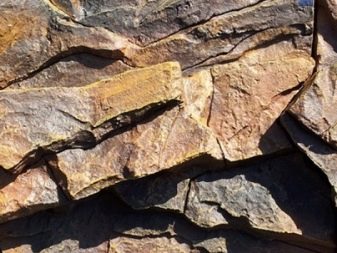
The film used for decoration may vary in thickness. This is a budget version of the background, which, despite the mass of color schemes and themes, is inferior to the panels. The main disadvantage of this type is that the film is very difficult to remove if the owner of the house wants to redesign the aquarium design. The film must be glued tightly, avoiding the formation of air bubbles.
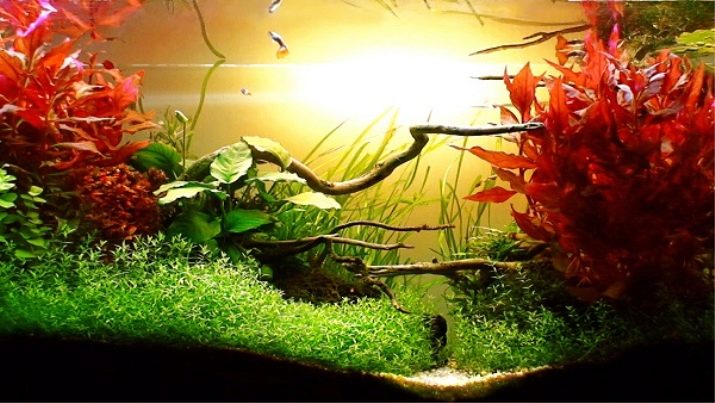
Color spectrum
Today, color choices vary when choosing a background. However, experts recommend choosing only a few shades of the color palette.
The black
This background is considered one of the best and natural for the fish themselves. Color is the most common, through which aquarists can maximize their attention on aquascaping and the inhabitants of the aquarium. Black has the ability to give expressiveness to greenery and color of fish, their color becomes brighter.
The black background is quite tricky - it creates a visual illusion of dissolving the back wall. This affects the depth: when you look, you get the feeling that the aquarium is much deeper than it actually is.
However, the black color is complex, not everyone can tolerate it, because over time it may seem dull. In addition, he loses some of the colors of the palette.

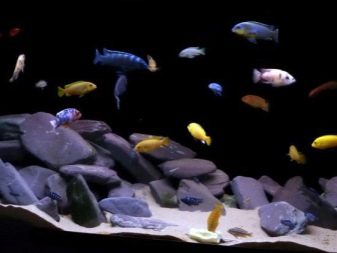
Aquamarine
This shade creates the effect of staying on the sea beach. They choose it not only for aquariums with a freshwater ecosystem: it is also suitable for marine. However, this color also has perceptual flaws. If it is wrong to choose the saturation of the color, the combined blue and green colors, the expressiveness of the inner world will be blurred.
Looking at such an aquarium creates a sense of tranquility and peace of mind. The effect of aquamarine color allows you to create the illusion of medium depths. These tones can distract attention from the saturated greens found in the aquarium.
However, an aquamarine background can decorate a pond with colorless scalaria and shark balu. In this case, the contrast will look advantageous, and especially with the harmonious use of the backlight.

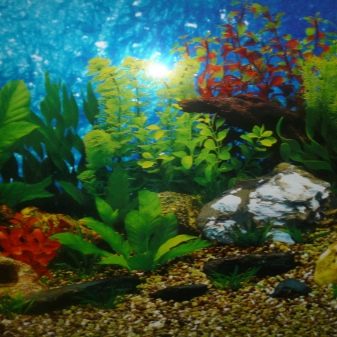
Blue and gray blue
These tones with the proper degree of saturation have the ability to transmit the atmosphere of the deep sea. The effect of ocean depth with this background seems natural, and the fish on it looks perfect. These modifications are intended primarily for marine aquariums. However, to give the right atmosphere to the rocky surroundings with dark tones is also possible. Experts recommend using these colors in marine installations. In this case, the aquarium landscape should be dark gray stones imitating rocks.
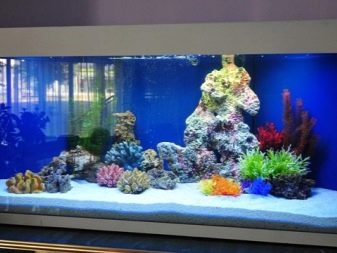
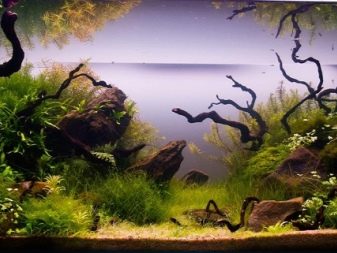
Sand, beige, brown
These tones allow you to recreate the atmosphere of river design with river water, sometimes unclear. This background color is used for aquariums, where you want to emphasize the rarity of plantations. As a rule, with such a design, the number of “arrangement” objects is dosed, whether it be stones, plants or elements in a group related to the background color. On a brown background, greens look especially expressive.
However, over time, the household does not have the effect of gravity when looking at the design, as in aquariums with a black background.
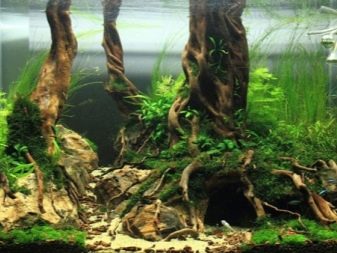
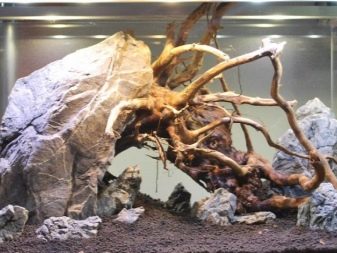
White
This background is considered the most difficult, only aquascape professionals choose it. With it, the aquarium looks spacious, and the fish look like they are floating in the air. Wherein the effect of glow is created, the fish and the aquarium landscape look bright and expressive. This solution is for simple species of fish, since not all of them like the white color, which seeks to unnecessarily highlight the aquarium and its contents. In addition, the stamps are white: any pollution of the background or its damage is immediately evident.
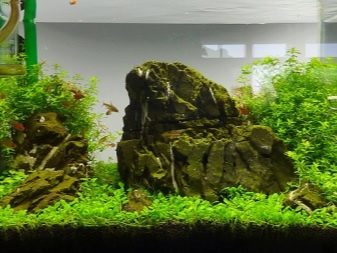
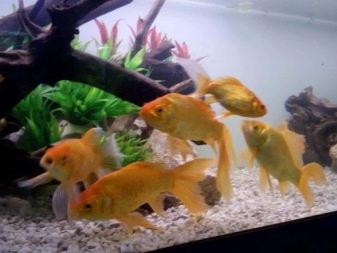
Orange and red
Despite the fact that these colors find their fans, choosing them for aquarium design is still not worth it. And the point here is not only the negative emotional perception and excessive aggression that they carry both to households and living beings themselves, who live in the reservoir. These colors are unnatural, often this is the reason for the stress of certain types of aquarium fish.
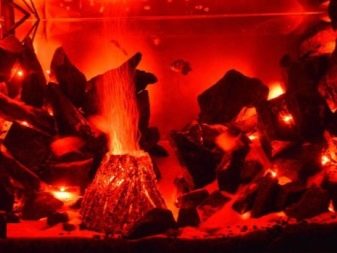
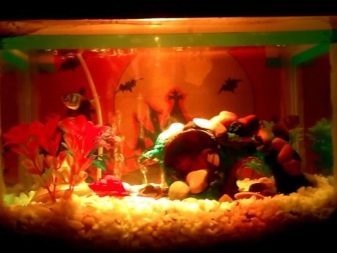
How to choose?
The choice of a particular color, as well as the type of background for the aquarium, consists of a number of nuances. For example, one of them is the type of soil: it is important that it contrasts with the chosen background, which is necessary for the correct aesthetic perception. Not the last role in the choice is drawing. If you want to choose exactly the photo wallpaper, do it wisely. For example, a print in the background is appropriate in design only when there is a moderate amount of decorative components inside the reservoir.
If the choice is stopped on the film, it is better to choose the option with the image of greater realism. When choosing the option drawn with paint, you need to consider: the stained glass will not look evenly. Somewhere the paint will lie in a dense layer, and somewhere with bald spots. Such a background will not look beautiful. In addition, in an attempt to save on the purchase of a finished option, the fish owner risks making the design toxic. This is an outdated solution, in addition, toxins can harm not only the water, but also the inhabitants of the reservoir.
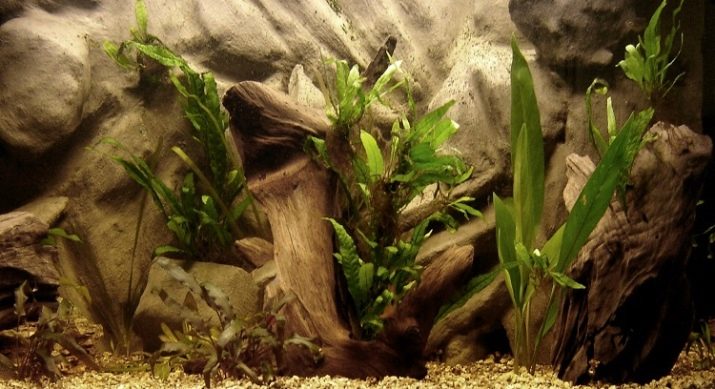
When choosing a solid background in the form of a finished plate, it is important to understand: it will significantly reduce the level of illumination of the reservoir. In addition, these options are more difficult to clean. When buying any background, you need to ensure that its size matches the parameters of the aquarium. If this is a film, then its dimensions should be slightly less than the parameters of the glass, since during installation it will be stretched. However, the film itself must be bought with a margin in order to exclude the likelihood of buying a size that is less than stated.
When choosing a color, they rely on their own preferences and type of fish. Not all of them like dark colors, and therefore it is extremely important to try to choose the solution that will not lead to stress for the small inhabitants of the aquarium. The color is also selected on the basis of the existing internal landscape: the interior decoration should not merge with the background color.
For example, on a green background, the greenery inside the aquarium is lost, you need to consider the game of contrasts and take into account the compatibility of colors.
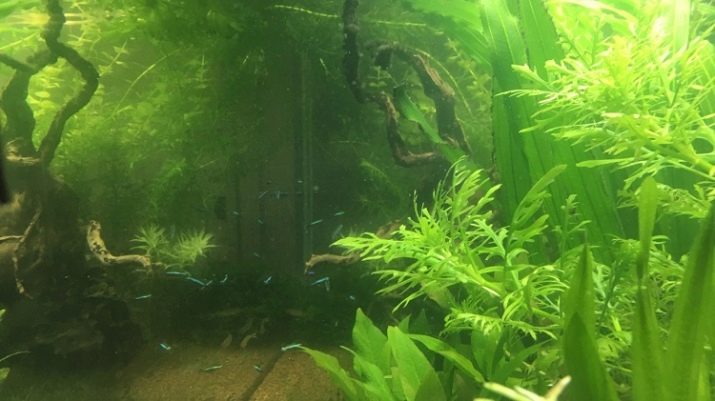
When choosing your option, you can build on the color scheme of the room in which the aquarium is located. For example, a lively background will look great in rooms where only neutral colors are contrasts. Juicy greens will dilute the contrast of white and gray, white and black. This design can become an expressive accent of the interior, endowing it with the necessary emotional coloring.
Aquamarine background will be appropriate in a room decorated in white, beige, sand tones. White is best used in contrast with a dark color. Bright red or orange will look better in a calm interior, where soft and muted colors reign. Blue cannot be used in cold rooms where a related color dominates. With an excess of blue, the atmosphere becomes dull.
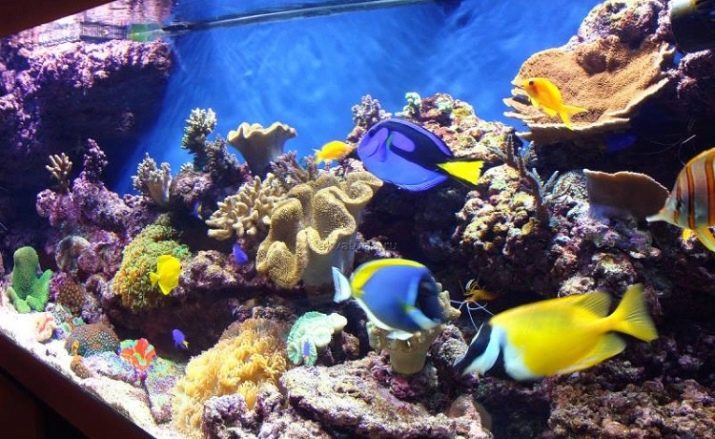
How to attach?
The fastening of the chosen option depends on its variety. For example, if it is a film, it can be glued both inside the aquarium and outside. For gluing inside you have to use a special sealant. In no case should you fix the sheet along the edges with tape without using glue. Very quickly, such a design will become sloppy. Between the film and glass, water will get, the adhesive tape will come off.
Do not use sugar syrup, petroleum jelly or soap. These products do not replace the glue used to fix the aquarium background. During installation, it is necessary to take into account a number of nuances. For example, glass before gluing must be cleaned and dried.
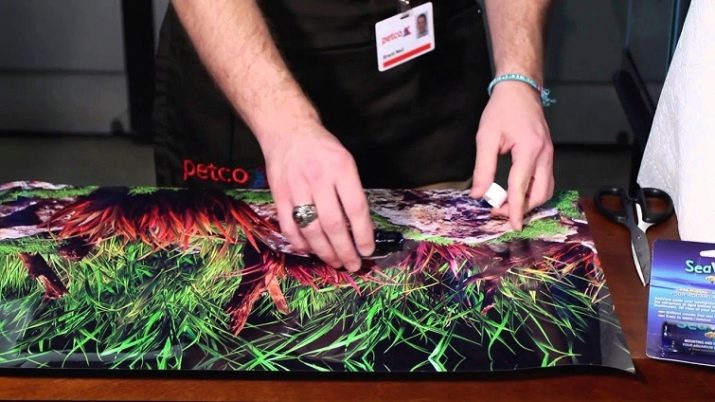
The adhesive composition on it is applied not pointwise, but in a serpentine manner, after which it is distributed over the surface by means of a wide spatula. Then proceed to gluing the background, it is applied to the surface and leveled. In this case, special attention is paid to the edges, since the durability of the background and its aesthetic perception will depend on the quality of gluing the edges. When leveling, excess glue and air bubbles are removed from under the film.
Excess glue is removed with a regular soft sponge. The final stage of installation will be fixing the film over gluing with tape. They do this from all sides, if desired, after some time, such a background can be changed to another.
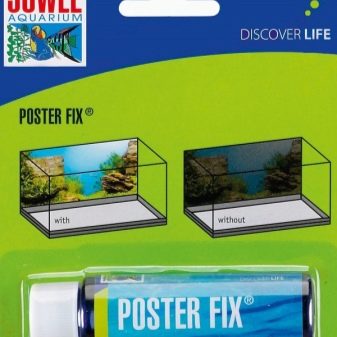
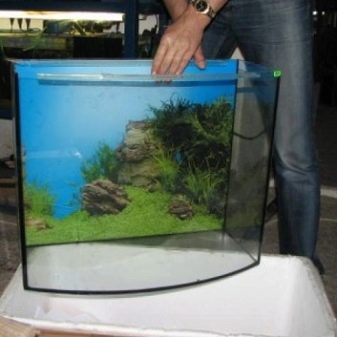
An unusual solution will be to design the back wall of the aquarium with a living background, for which they use moss. In this case, it is necessary to use a metal or plastic mesh twice the size of the decorated wall. The fixators of this background will be suction cups and colorless fishing line. Setting such a background is not difficult: half of the grid is evenly covered with a layer of moss, after which it is covered with the second half of the grid.
Further the finished structure is attached to the glass surface using suction cups. This background is unusual and requires regular care. Moss grows in water, which is why it will have to be trimmed over time. However, a living wall as a background looks very beautiful and unusual, however, it will be necessary to supplement such a landscape not with plants, but with something else. The disadvantage of a live background for an aquarium is the need to use special fertilizers for aquatic crops.

The benefits are also obvious: living background can be created from different types of moss, as well as ground cover. You can even create such a background from nylon threads and a frame from a transparent material, inserting plants between the threads. As for the installation of a volumetric background, it is fixed using special glue, which is usually included in the package. And also it is fixed by pressing it with a layer of soil or stones to the back wall.
The relief background is suitable for standard type aquariums.
See how to make volumetric background into an aquarium with your own hands in the next video.
